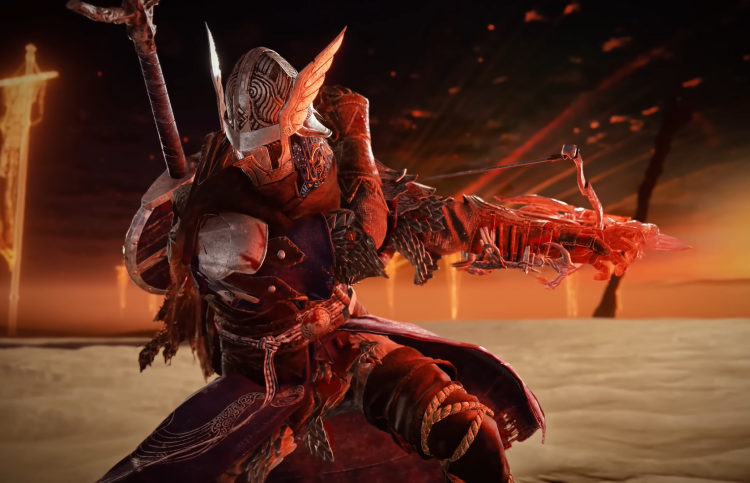FromSoftware Is Still Balancing Nightreign With Days Left Before Launch
FromSoftware's next move, Elden Ring: Nightreign, is nearly here, and the studio is still deep in the trenches tuning its multiplayer combat and balance systems. Launching May 29, the game is a dramatic shift from the original Elden Ring’s solo-first experience, embracing a PvPvE structure that feels like it could reshape the genre.
First-time director Junya Ishizaki said this week that the final pre-release days are "equal parts nerves and excitement" for the team. Speaking to GamesRadar+, he explained that it’s all about last-minute balance now:
“We really try to tweak things until the last minute. We're busy fine-tuning, getting the most out of any single session.”
“We want players to feel happy and comfortable in each session... that player comfort and that play feel just really fine-tuned until the very end.”
That’s a bold promise, considering FromSoftware is infamous for building discomfort into the core loop. But with Nightreign’s structure aiming at repeatable online play, it actually makes sense. This isn't just another hard solo grind—it’s a shared, chaotic space.
Nightreign builds on the world of Elden Ring, but with design changes that suggest FromSoftware is experimenting with something entirely new. Yes, there’s still loot, builds, and big bosses. But now players invade shared worlds, form short-term alliances, and fight over limited resources. It's part Souls, part battle royale, and a little bit MMO raid—all wrapped in a dark fantasy package.
And that could mean we're heading into a new subgenre era: rogue-souls-like battle royales.
It might sound wild, but the timing is right. Elden Ring proved that Souls mechanics can scale to massive audiences. Add the pressure and unpredictability of a battle royale, and you’ve got a formula that could spawn imitators. Think Escape from Tarkov meets Dark Souls. Now give it persistent progression and character classes. That’s where Nightreign seems to be aiming.
And yes, it’s bringing new toys to the fight.
One of the most hyped reveals ahead of the Nightreign launch is the Elden Ring Nightreign Reveals Revenant Class update. This new archetype trades heavy armour for speed and chain attacks, featuring parasitic tendrils and burst movement options. It’s aggressive, perfect for PvP ambushes, and was designed to counter heavier classes like the Paladin and Duskblade.
While the game does launch with a full set of curated modes, expect seasonal updates to expand its replay value. Leaks suggest a rotating map pool and region-specific modifiers, potentially with weather effects that change gameplay—think sandstorms, blood fog, or enemy AI shifts tied to the in-game time system.
FromSoft is also keeping things flexible post-launch. The studio hasn’t committed yet, but there are signs that a Two-Player Mode could still arrive post-Launch, possibly offering a persistent partner system beyond the temporary online teams. In interviews, Miyazaki hinted that they’re watching player feedback and "not ruling anything out" when it comes to co-op longevity.
And don’t expect balance to end at launch.
Because Nightreign isn’t a pure single-player title, meta health matters. FromSoftware has a solid track record with patching—Sekiro and Elden Ring both received post-launch balance overhauls—but this time they’ll have to manage real-time player economies and PvP tuning. That’s a whole different level of maintenance. If a build gets too powerful, or a class combo breaks boss mechanics, it’s not just frustrating—it can break matchmaking integrity.
“If any one weapon takes chunks out of bosses too fast... the entire experience is worsened.”
For a game like Nightreign, where most sessions are built around exploring dungeons with and against other players, that kind of imbalance hits hard.

What’s different here is intent. Nightreign isn’t just built to be hard—it’s built to be dynamic. The way players interact with each other becomes part of the difficulty. That means the game has to stay alive not only through content drops, but through careful curation of risk, reward, and chaos.
FromSoftware knows that, and they’re embracing it.
Hardware-wise, players can already prep their rigs. The Elden Ring: Nightreign PC System Requirements were confirmed last week. Minimum specs stay close to the original game—GTX 1060 or RX 580 for 1080p, 8 GB RAM, and 60 GB of SSD space. But to fully enjoy high-fidelity chaos in larger PvPvE arenas, FromSoft recommends an RTX 3070 and at least 16 GB RAM. DLSS and FSR 3 support are in from day one, which should help smooth out larger player lobbies and open-world dynamic encounters.
With a few days left, Nightreign feels less like a spinoff and more like a new testing ground. If it lands, don’t be surprised if other studios try to copy it. Not just Soulslikes with co-op, but large-scale PvPvE games with deep combat, progression, and storytelling. It’s Dark Souls meets The Division—and for better or worse, it could reshape the future of action RPGs.
Now all that’s left is to see how many people survive the first night.

Comments